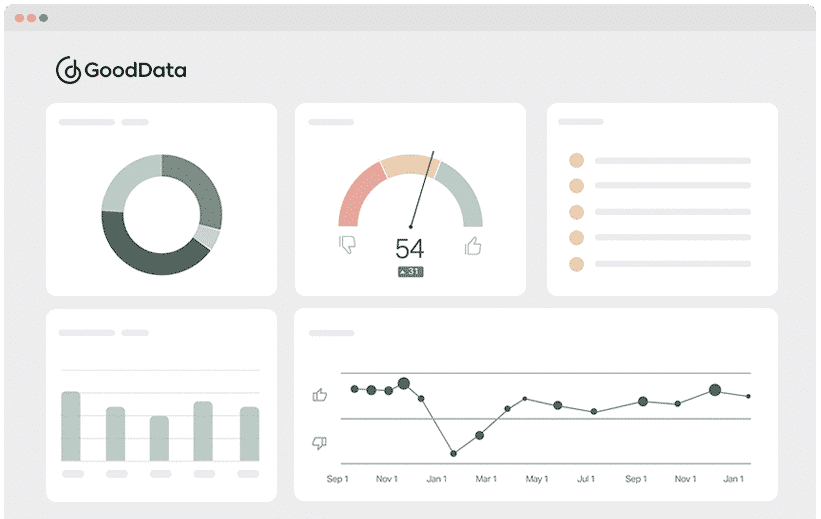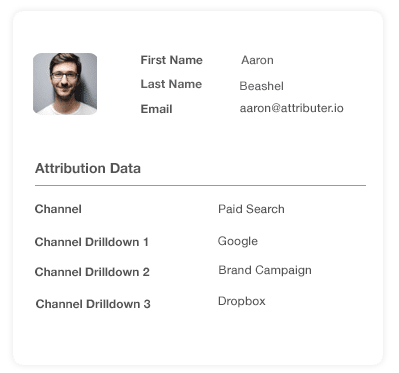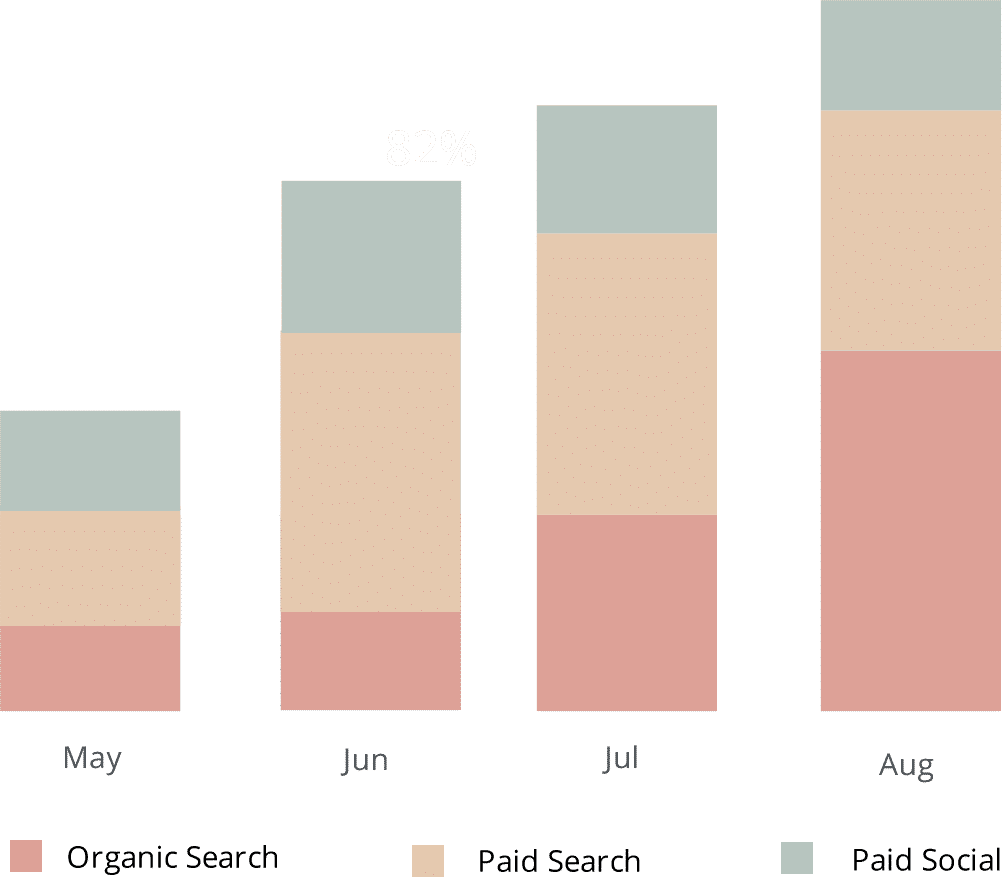The easiest way to get UTM parameters into Good Data
Learn how to pass UTM parameters and other marketing attribution information into Good Data so you can run reports that show you what's driving your leads, customers & revenue.

Good Data is one of the best analytics tools available today. It lets you create reports and dashboards to monitor the key areas that are important to your business.
However, like most analytics tools today, Good Data can only report on data that you capture and store in your CRM or data warehouse.
So if you want to report on the success of your marketing campaigns in Good Data, you need to be capturing and storing UTM parameters that your website visitors and leads arrive with.
But how do you do this? How do you capture and send UTM parameters into Good Data so you can create reports on them?
In this article, we'll provide you 4 simple steps to capture and send UTM parameters into Good Data and show you a simple tool (Attributer) that makes this easy.
What is Attributer?
In its most basic form, Attributer is a piece of code that you place on your site.
Whenever a visitor lands on your site, Attributer will check some technical data to figure out where your visitor has come from (i.e., the UTM parameters in the URL). Once the origin of your visitor has been determined, Attributer will then categorise each visitor into a series of channels ( like Organic Search, Paid Search, Paid Social, etc.) and then will store this information in the user’s browser as a cookie.
Whenever a user submits a form on your site, Attributer sends the UTM parameters and other data into your CRM or other backend tools, where the data can be sent into Good Data for analysis.
When the data is inside Good Data, you can now build reposts that provide answers to questions like:
- How many leads have my Facebook Ads generated?
- What’s the total revenue that my Facebook Ads have generated?
- What’s the customer average deal size of my Google Ads compared to my Facebook Ads?
- What’s the overall ROI of all our ads?
4 steps for analysing UTM parameters in Good Data
Using Attributer to get UTM parameters into Good Data is easy. Here's how to do it in 4 easy steps:
1. Add UTM variables to your ads

To provide Attributer with a headstart on knowing where your traffic is coming from, you must add UTM parameters to your ads and campaigns.
Examples are your ads on social networks like LinkedIn, Twitter & Facebook, in search engines like Google & Bing, and in every bespoke campaign you do in places like trade publications.
2. Add the Attributer code to your website

When the UTM parameters are in place, the next thing to do is add the Attributer code to your website.
When you’re done signing up for a free trial, a little snippet of code will be provided to you, which you need to add to your site. This code can be compared to the Google Analytics code or other marketing tools’ code you might have added before. Hence, the Attributer code should also be added this way.
It may vary according to the CMS system you use to manage your website (i.e., Squarespace, WordPress, etc.), but there will most likely be an option in the Settings section to add the code to your site’s header.
On the other hand, if you’re using a tag management service like Google Tag Manager, then you can simply add the code through this tool.
If you need further instructions, simply check out our help site.
3. Send the data to your CRM or other tools

When the code is up and running, Attributer will figure out how a visitor has arrived at your site, categorise each visitor according to their Channel (i.e., Paid Search, Organic Search, etc.), and store this sorted data in the user's browser as a cookie.
To send the data into your backend tools (i.e., CRM or wherever you store your customers' data), you need to retrieve the data from the cookie. This can be done in two ways:
- Put hidden fields in forms - Adding hidden fields to your forms will provide Attributer with a space to write data into. Whenever a form is submitted, the data placed in the hidden fields will be passed to your backend tools along with the rest of the information the lead enter in the form (their name, email, contact number, etc.)
- Recapture data from the cookie - Adding a simple line of javascript to your website forms will retrieve the UTM parameters from the Attributer cookie and pass them into your backend tools. This approach is beneficial if you have the 'Sign up with Google' or 'Sign up with Facebook' button on your site, which allows the user to sign up for your product without literally completing a form.
4. Run reports in Good Data

Once the UTM parameters and other attribution data have reached your CRM and/or your data warehouse, then you can start creating reports and dashboards that display your key customer acquisition metrics sorted according to channel or campaign.
Having these reports will allow you to determine the answers to some of your toughest marketing questions, such as:
- How many leads did my Facebook Ads generate?
- Which LinkedIn Ad campaigns got the most leads?
- How many sales opportunities came from our Twitter Ads?
- Which Facebook Ads campaigns drove the most pipeline?
- How many customers have we gotten from our Google Ads?
- How much revenue has come from our SEO efforts?
- And much more
Why using Attributer is better than capturing raw UTM parameters
With many other tools for capturing UTM parameters, what makes Attributer a better choice for you?
Unlike other tools, Attributer does much more than just capturing raw UTM parameters. It also does the following:
1. Captures all traffic
Other than collecting raw UTM parameters and sending them into your CRM and analytics tools, Attributer also gathers your attribution information on visitors who come from channels with no UTM parameters present, such as Direct, Referral, Organic Social, and Organic Search.
With this, you will be able to figure out where ALL your leads & customers have come from and your reporting will not be limited to the ones that come from campaigns with UTM parameters.
2. Remembers the data across pageviews and sessions
It is common for most other UTM parameter capturing tools to require the UTM parameter to actually be present in the URL on the page where the form is completed. This becomes a problem when the user completes your form on a different page than the one they first landed on.
For instance, imagine someone clicks on one of your Google Ads and is led to a landing page for that specific campaign.
After some reading and exploring, the user decides that they want your product or service, so they click the ‘Get A Quote’ button and are then taken to a different page to fill out your quote request form. This means that the page on which they submit the form isn’t the same page the user first landed on, ultimately losing the UTM parameters.
This won’t happen with Attributer as it can store the UTM parameters in the user’s browser as a cookie. So regardless of the number of pages the user decides to visit before filling out your form, the UTM parameters are safe and will always be passed to your CRM and data warehouse.
3. Provides cleaner data
If you've been in marketing for a while and used UTM parameters in the past, you probably know how messy the data can get, particularly if your ads have been handled by various people or agencies in the past.
For example, imagine some of your Facebook Ad campaigns are tagged with UTM_Source=Facebook (capitalized), others with UTM_Source=facebook (uncapitalized), and others with UTM_Source=fb.
If you try to run reports in Good Data using the above data captured by other tools, the results would show up as 3 different sources and will provide you with misleading information.
Attributer, on the other hand, was designed to anticipate these inconsistencies and can assign these leads to the appropriate channel (i.e., Paid Social) regardless.
4. Captures landing page data as well
If you’ve been wanting to know how many leads and customers your blog has generated or any of the in-depth content you spent hours working on, Attributer can assist you on these as well.
Apart from collecting UTM parameters and other channel data, it also gathers the landing page (i.e., attributer.io/blog/capture-utm-parameters) and its category (i.e., /blog).
Having this data will provide insight into how certain sections on your site are performing (such as your blog) in terms of lead, customer & revenue generation.
Moreover, since it captures both information on the landing page and its category, you will be able to view how each section of your website performs (i.e. your blog as a whole) as well zero in on a specific content’s performance (I.e. individual blog posts).
Wrap up
"Hopefully, it is now clear how Attributer is more than just the average UTM parameter capturing tool. It does more than just capture UTM parameters and does a lot of work to ensure your data is clean and accurate.
Ready to see what Attributer can do for you? Start your 14-day free trial to see if it’s a fit for your business.
Get Started For Free
Start your 14-day free trial of Attributer today!

About the Author
Aaron Beashel is the founder of Attributer and has over 15 years of experience in marketing & analytics. He is a recognized expert in the subject and has written articles for leading websites such as Hubspot, Zapier, Search Engine Journal, Buffer, Unbounce & more. Learn more about Aaron here.
